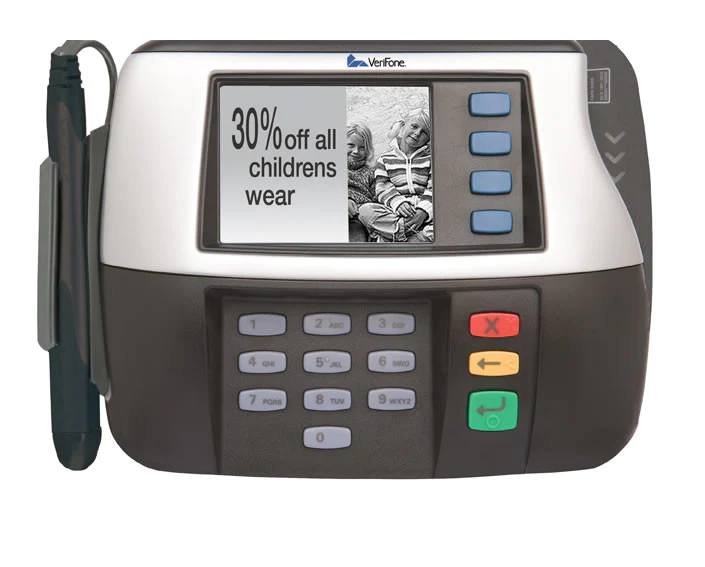
If you’re looking to save money on your credit card payments, a balance transfer credit card may be the answer.
In this blog post, we will discuss everything you need to know about balance transfers and how they can help you save a lot of money in the long run! We’ll answer common questions, like “do balance transfers hurt your credit?” and “how do you qualify for a balance transfer?”
We’ll also tell you what to watch out for when transferring balances and provide some tips on how to make the most of this type of credit card.
Join the Accepted Platinum Credit Card Rewards Program!
Table of Contents
What is a Balance Transfer Credit Card?
A balance transfer credit card is a type of credit card that allows you to transfer the balance of one credit card to another. This can be useful if you have a high-interest rate on one credit card and want to transfer the balance to a card with a lower interest rate.
A financial strategy like this can save you a lot of money in the long run, as you will not have to pay as much interest on your balance.
Do Balance Transfers Hurt Your Credit?
Balance transfers will not directly hurt your credit score. However, if you are unable to make payments on time, this will damage your score. Additionally, some balance transfer cards have fees that can add to your debt load and make it more difficult to pay off.
Mistake To Avoid: Balance transfers won’t have any direct impact on your credit score. However, if you’re transferring a balance from one card to another, it’s important to make sure that you don’t close the old account. Doing so would cause your credit utilization ratio to spike, which could lead to a drop in your credit score.
Do Balance Transfers Increase Credit Limits?
In most cases, no. Your new balance transfer credit card will likely have the same credit limit as your old card. This is because your credit limit is based on your credit score and payment history, neither of which changes when you get a new balance transfer card.
What are the Best Balance Transfer Cards?
The best balance transfer cards are the ones with the lowest interest rates and fees. Some cards also offer introductory periods during which you can avoid paying interest altogether.
When looking for a balance transfer credit card, look for a card with a low-interest rate and no balance transfer fee. You should also consider whether the introductory period is long enough to help you pay off your debt.
Cards with balance transfer fees often have higher interest rates, so you’ll want to avoid them if possible. Likewise, cards with shorter intro periods may not give you enough time to pay off your balance before interest accrues.
The best balance transfer credit cards offer low-interest rates, no balance transfer fees, and lengthy intro periods. Do your research to find the card that’s right for you and your financial situation.
How do You Qualify for a Balance Transfer?
Most balance transfer credit cards require good to excellent credit for approval. If you have bad credit, you may not be able to qualify for a balance transfer card.
Some balance transfer cards require that you open a new account with the issuer. Others may allow you to do a balance transfer from an existing account.
You will need to know your current credit card balance and the interest rate you are paying on that balance. You will also need to know the balance transfer fee and the APR for the new balance transfer card.
To get the most benefit from a balance transfer, you will want to pay off your balance before any introductory period expires. Introductory periods can range from six months to 21 months. Once the introductory period expires, the APR will go up.
Balance transfer credit cards can be a great way to save money on interest and pay down your debt faster. Just be sure to do your homework before you apply to make sure you are getting the best deal possible.
Can I Still Use My Credit Card After a Balance Transfer?
Yes, you can still use your credit card after a balance transfer. However, there are some things to keep in mind.
First, most balance transfer offers have a period of time when you cannot make new purchases on the card. This is usually between three and six months.
Second, if you do make new purchases on the card during this period of time, they will usually be subject to a higher interest rate than your balance transfer APR.
Finally, it’s important to remember that balance transfers are not a “get out of debt free” card. You will still need to make monthly payments on your balance transfer credit card to pay off your debt.
Can You Balance Transfer Forever?
You can hop your debt from one card to another as long as you continue getting approved, but most balance transfer offers require a fee to move your balance from your old card. This is typically around 3% of the total balance.
Some credit card companies will also offer promotional rates on balance transfers for a limited time. For example, you may be able to get 0% APR for 12 months on balance transfers. After the intro period ends, the APR will go up to the standard purchase APR of the card.
Cash Advances vs Balance Transfers
It’s important to note that balance transfers are different from cash advances. With a balance transfer, you’re transferring debt from one credit card to another credit card. With a cash advance, you’re withdrawing cash from your credit card. Balance transfer credit cards generally have lower interest rates than cash advance credit cards.
Balance transfer credit cards can be a great way to save money on interest and pay off your debt faster. However, it’s important to understand the balance transfer fee and promotional rates before you apply for a balance transfer card.
What is a Common Fee for a Balance Transfer?
Balance transfer cards generally have a balance transfer fee that’s either a flat rate or a percentage of your total balance. This fee is typically around $0-$150.
For example, if you have a balance of $10,000 and your balance transfer fee is $50, you’ll owe $10,050 total to the new card issuer. If the fee is 3% of your balance, however, you would owe $10,300.
What’s the Interest Rate on Balance Transfer Credit Cards?
Balance transfer cards usually offer an introductory 0% APR period. This means that for a set period of time (usually 12-21 months), you won’t be charged any interest on your balance. After the intro period ends, the APR will likely increase to a variable rate between 13% – 25%.
What is the Minimum Balance Transfer Amount?
Most balance transfer credit cards require you to transfer a minimum of $100-$500. Some balance transfer cards have no minimum balance transfer amount. This is something that should be taken into account when you’re comparing balance transfer offers.
What is the Balance Transfer Period?
The balance transfer period is the length of time you have to complete your balance transfer. After this period ends, any remaining balance will start accruing interest at the standard APR. Balance transfer periods typically last between 45-60 days.
Can I Balance Transfer from One Credit Card to Another?
In most cases, you can balance transfer from one credit card to another. However, there are a few exceptions. For example, you can’t balance transfers from a business credit card to a personal credit card.
Additionally, some balance transfer cards only allow you to balance transfers from specific types of cards, such as other balance transfer cards.
Does a Balance Transfer Count as a Purchase?
This is a common question among balance transfer credit cardholders. The answer is no, a balance transfer does not count as a purchase. Balance transfers are classified as cash advances and are subject to the cash advance APR and fees.
The purpose of cash advances and balance transfers are different as we mentioned above, but they are similar in the sense that they both do not count as a purchase.
Does a Balance Transfer Count as a Payment?
Yes, a balance transfer does count as a payment. This means that you will still be required to make at least your minimum monthly payment on time each month. Failure to do so could result in late fees and penalties, as well as damage to your credit score.
What are the Benefits of a Balance Transfer Credit Card?
Balance transfer credit cards can help you save money on interest, pay down your debt faster, and improve your credit score. Additionally, balance transfer cards often offer introductory 0% APR periods, which can give you some breathing room to pay down your debt.
Another benefit of balance transfer cards is that they can help you consolidate your debt into one monthly payment. This can make it easier to manage your debt and stay on track with your repayment plan.
Balance transfer credit cards also offer the convenience of balance transfers. With balance transfers, you can quickly and easily move your balance from one card to another. This can be helpful if you find a balance transfer card with a better interest rate or terms.
What are the Drawbacks of a Balance Transfer Credit Card?
Balance transfer cards tend to have balance transfer fees and may also have annual fees.
Additionally, balance transfer cards usually have a shorter intro APR period than other types of cards, which means you’ll need to be diligent about paying off your balance before the intro period ends.
Finally, balance transfer cards typically have high-interest rates after the intro period ends, which can make carrying a balance costly.
Who Shouldn’t Get a Balance Transfer Credit Card?
Balance transfer credit cards may not be the best option for you if you:
- Can’t qualify for a balance transfer card with a 0% intro APR period.
- Don’t have enough debt to make a balance transfer worthwhile.
- Think you may carry a balance after the intro period ends.
- Need to improve your credit score.
- Don’t have enough income to qualify for a balance transfer card.
- Can’t afford the balance transfer fee.
- Don’t have a good credit history.
Are Balance Transfers Worth It?
Balance transfers can be a great way to save money on interest and pay down your debt faster. However, they’re not right for everyone.
Before you apply for a balance transfer card, make sure you understand the fees, terms, and conditions.
Additionally, be sure to have a plan in place for paying off your balance before the intro APR period ends. Otherwise, you could end up paying more in interest than you would have with your old card.
Are Balance Transfer Credit Cards Right For You?
Balance transfer credit cards can be a great way to save money on interest and pay down debt. But before you sign up for one, it’s important to understand how they work and what the potential drawbacks are.
Here are some things to consider before getting a balance transfer credit card:
How Much Debt do you Have?
If you only have a small amount of debt, a balance transfer card may not be worth the hassle.
What is the Interest Rate on Your Current Card?
If it’s already low, you may not save much money by transferring your balance.
Are You Disciplined Enough to Pay Off Your Debt Within the Intro Period?
Balance transfer cards typically offer 0% APR for 12-21 months, but after that, the rate goes up. If you think you’ll still be carrying a balance after the intro period ends, you may be better off sticking with your current card.
What are the Fees?
Some balance transfer cards charge a balance transfer fee of around $50 or more. Make sure you compare this to the interest you’ll save by transferring your balance.
What is Your Credit Score?
You’ll need good to excellent credit to qualify for the best balance transfer offers. If your credit isn’t great, you may not be able to get a 0% intro APR or may have to pay a higher balance transfer fee.
Now that you know more about balance transfer credit cards, it’s time to decide if one is right for you. If you’re disciplined about paying off your debt and can qualify for a good offer, a balance transfer card could help you save money and get out of debt faster.
But if you’re not sure you can pay off your balance within the intro period, or if you have bad credit, a balance transfer card may not be the best option.
Do some research and compare offers to find the best balance transfer credit card for your needs. And remember, even if you get a 0% intro APR, it’s important to make payments on time and in full to avoid costly late fees and interest charges.
With a little planning and discipline, a balance transfer credit card can be a great tool for getting out of debt.
If you’re considering a balance transfer credit card, compare offers from multiple issuers to find the best terms. And remember to read the fine print carefully so you understand all the fees and terms before you apply.
How to Apply for a Balance Transfer Credit Card
Applying for a balance transfer credit card is a simple process. Just fill out an application with your personal and financial information, and wait for a decision.
If you’re approved, you’ll receive a credit card with a balance transfer limit. This is the maximum amount of debt you can transfer to the new card. Be sure to transfer only as much debt as you can comfortably pay off within the intro period.
Once you have your balance transfer credit card, you can begin the balance transfer process. Start by contacting your current credit card issuer to let them know you’re transferring your balance.
Then, request a balance transfer form from your new credit card issuer. Once you have both forms, fill them out and send them back to your new issuer.
Your balance transfer will take place within a few weeks, and you’ll start paying interest on your balance at the intro APR. Make sure you make all your payments on time and in full to avoid late fees and interest charges.
Balance Transfer Credit Card (Conclusion)
If you’re considering a balance transfer credit card, be sure to do your research and compare different cards to find the one that’s right for you.
Balance transfer credit cards can be a great tool for managing debt, but they’re not right for everyone. Be sure to understand the fees, terms, and conditions before you apply.
Additionally, have a plan in place for paying off your balance before the intro APR period ends. Otherwise, you could end up paying more in interest than you would with your old card.



